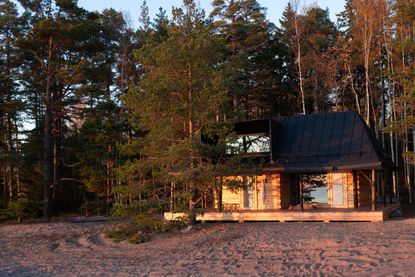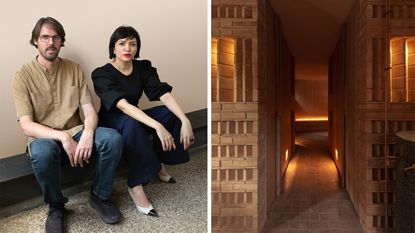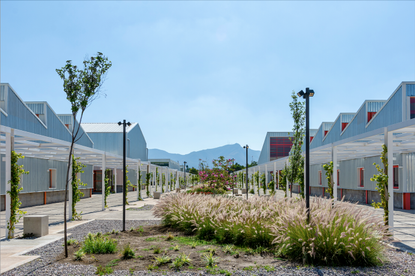Architecture
From modernist marvels, to heavenly houses, and the breaking news breaking new ground, this is your one-stop shop for the finest building design
Explore Architecture
-
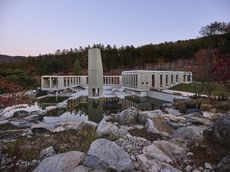
A new Korean garden reimagines tradition for the 21st century
The new Médongaule Korean Gardens in Gyeonggi Province explore the country’s rich tradition; within it, the Seongok Academy Building provides a layered spatial experience drawing on heritage and a connection with nature
By Fiona Bae Published
-

Fulham FC’s new Riverside Stand by Populous reshapes the match-day experience and beyond
Populous has transformed Fulham FC’s image with a glamorous new stand, part of its mission to create the next generation of entertainment architecture, from London to Rome and Riyadh
By Jonathan Bell Published
-

A group of friends built this California coastal home, rooted in nature and modern design
Nestled in the Sea Ranch community, a new coastal home, The House of Four Ecologies, is designed to be shared between friends, with each room offering expansive, intricate vistas
By Tianna Williams Published
-
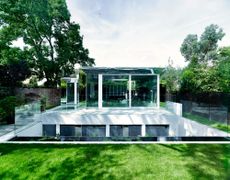
This modern Clapham house is nestled indulgently in its garden
A Clapham house keeps a low profile in south London, at once merging with its environment and making a bold, modern statement; we revisit a story from the Wallpaper* archives
By Ellie Stathaki Published
-
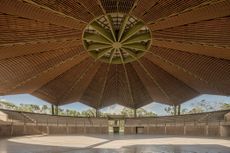
Aidia Studio's mesmerising forms blend biophilia and local craft
Mexican architecture practice Aidia Studio's co-founders, Rolando Rodríguez-Leal and Natalia Wrzask, bring together imaginative ways of building and biophilic references
By Ellie Stathaki Published
-
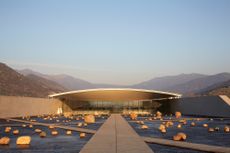
Traditional methods underpin Smiljan Radic's designs: 'I am not a creator of new shapes'
Smiljan Radic is building a reputation with fabric roofs, fake ruins and a supporting cast of boulders; we visit a story from the Wallpaper* archives, exploring the architect's work, from a Chilean winery to London’s 2014 Serpentine Pavilion
By Ellie Stathaki Published
-
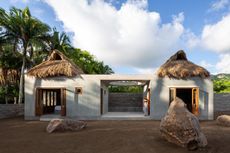
Mexico's Palma stays curious - from sleepy Sayulita to bustling Mexico City
Palma's projects grow from a dialogue sparked by the shared curiosity of its founders, Ilse Cárdenas, Regina de Hoyos and Diego Escamilla
By Ellie Stathaki Published
-
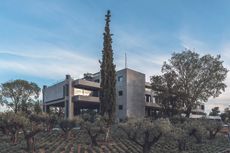
A Greek brutalist gem wows with its reimagining in Athens
Athens architect Georges Batzios squares up to the renovation of a landmark Greek brutalist office block in the capital's suburbs; we revisit a story from the Wallpaper* archive
By Ellie Stathaki Published
-

Modernism for sale: a Norman Jaffe-designed icon on Shelter Island hits the market
The Osofsky House epitomised the glamour of high-end 70s modernism on Long Island. Now updated and refurbished, it’s back on the market for the first time in over two decades
By Jonathan Bell Published
-
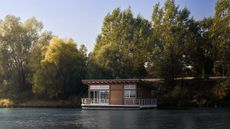
This floating river cabin in Serbia is a peaceful haven inspired by old shipyards
This Sava River cabin, a floating design by Aleksandar Stanković, is an intimate home, perfect for leisurely afternoons, cold water swimming and weekend stays
By Tianna Williams Published
-

The White House faced the wrecking ball. Are these federal buildings next?
Architects and preservationists weigh in on five buildings to watch in 2026, from brutalist icons to the 'Sistine Chapel' of New Deal art
By Adrian Madlener Published
-

Top 10 architecture moments of 2025
Architecture & environment director Ellie Stathaki picks the top 10 architecture moments of 2025, to recount, remember and reassess
By Ellie Stathaki Published
-
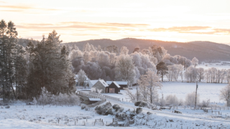
Step inside this perfectly pitched stone cottage in the Scottish Highlands
A stone cottage transformed by award-winning Glasgow-based practice Loader Monteith reimagines an old dwelling near Inverness into a cosy contemporary home
By Léa Teuscher Published
-
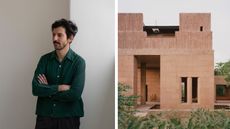
Deep dive into Carlos H Matos' boundary-pushing architecture practice in Mexico
Mexican architect Carlos H Matos' designs balance the organic and geometric, figurative and abstract, primitive and futuristic
By Michael Snyder Published
-
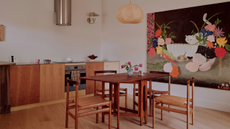
This curved brick home by Flawk blends quiet sophistication and playful details
Distilling developer Flawk’s belief that architecture can be joyful, precise and human, Runda brings a curving, sculptural form to a quiet corner of north London
By Léa Teuscher Published
-
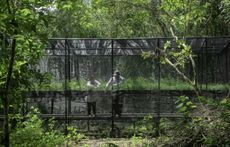
For Rodríguez + De Mitri, a budding Cuernavaca architecture practice, design is 'conversation’
Rodríguez + De Mitri stands for architecture that should be measured, intentional and attentive – allowing both the environment and its inhabitants to breathe
By Ana Karina Zatarain Published
-
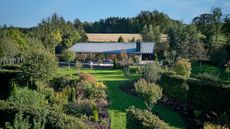
A compact Scottish home is a 'sunny place,' nestled into its thriving orchard setting
Grianan (Gaelic for 'sunny place') is a single-storey Scottish home by Cameron Webster Architects set in rural Stirlingshire
By Tianna Williams Published
-
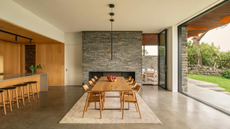
Porthmadog House mines the rich seam of Wales’ industrial past at the Dwyryd estuary
Ström Architects’ Porthmadog House, a slate and Corten steel seaside retreat in north Wales, reinterprets the area’s mining and ironworking heritage
By Léa Teuscher Published
-
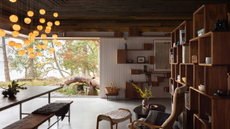
This retreat deep in the woods of Canada takes visitors on a playful journey
91.0 Bridge House, a new retreat by Omer Arbel, is designed like a path through the forest, suspended between ferns and tree canopy in the Gulf Island archipelago
By Léa Teuscher Published
-

Top 25 houses of 2025, picked by architecture director Ellie Stathaki
This was a great year in residential design; Wallpaper's resident architecture expert Ellie Stathaki brings together the homes that got us talking
By Ellie Stathaki Published
-
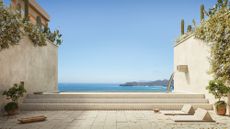
These Guadalajara architects mix modernism with traditional local materials and craft
Guadalajara architects Laura Barba and Luis Aurelio of Barbapiña Arquitectos design drawing on the past to imagine the future
By Ana Karina Zatarain Published
-
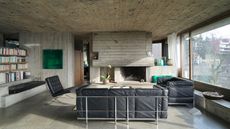
Inside architect Andrés Liesch's modernist home, influenced by Frank Lloyd Wright
Andrés Liesch's fascination with an American modernist master played a crucial role in the development of the little-known Swiss architect's geometrically sophisticated portfolio
By Adam Štěch Published
-
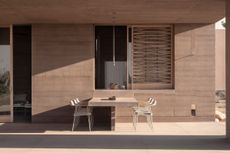
This Mexican architecture studio has a surprising creative process
The architects at young practice Pérez Palacios Arquitectos Asociados (PPAA) often begin each design by writing out their intentions, ideas and the emotions they want the architecture to evoke
By Ellie Stathaki Published
-
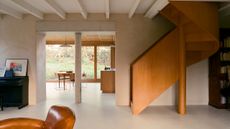
A former fisherman’s cottage in Brittany is transformed by a new timber extension
Paris-based architects A-platz have woven new elements into the stone fabric of this traditional Breton cottage
By Jonathan Bell Published
-
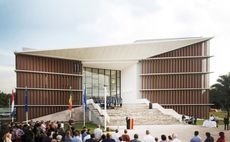
The diverse world of Belgian embassy design – 'style and class without exaggeration'
'Building for Belgium: Belgian Embassies in a Globalising World' offers a deep dive into the architecture representing the country across the globe – bringing context to diplomatic architecture
By David Plaisant Published
-
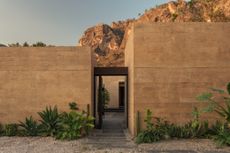
The architecture of Mexico's RA! draws on cinematic qualities and emotion
RA! was founded by Cristóbal Ramírez de Aguilar, Pedro Ramírez de Aguilar and Santiago Sierra, as a multifaceted architecture practice in Mexico City, mixing a cross-disciplinary approach and a constant exchange of ideas
By Ellie Stathaki Published
-
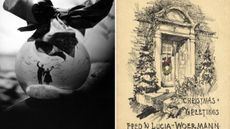
These Christmas cards sent by 20th-century architects tell their own stories
Handcrafted holiday greetings reveal the personal side of architecture and design legends such as Charles and Ray Eames, Frank Lloyd Wright and Ludwig Mies van der Rohe
By Anna Solomon Published
